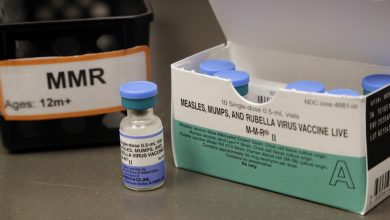Russian Scientists Innovate New Method to Detect Vision Problems Associated with Glaucoma
علماء روس يبتكرون طريقة حديثة لكشف مشكلات الرؤية المرتبطة بمرض الجلوكوما
QNA
Moscow: Russian scientists at the Voronezh Medical University have created a modern scientific method to detect vision problems that can be a risk of developing glaucoma.
According to the experiments carried out by the researchers during the study in the laboratory of Kravkov (Department of Clinical Physiology of Vision) at the National Research Center for Ophthalmology in Russia, a partial photocatalyst device has been innovated to be used in this new method by using 3D printing techniques, which is special glasses combined with a photocatalyst at a certain frequency that has been undergoing tests since 2017.
Head of the Department of Ophthalmology at the university and leader of the scientific team Professor Maria Kovalevskaya explained that this method reduces the risk of developing the disease by 30 percent, noting that it is possible by using light stimulation to influence the function of the optic nerve and retina.
The results showed that this method is good and prevented the development of acute glaucoma in many people, as patients felt after undergoing ten sessions an improvement in vision, sharpness, color perception, and a reduction in the risk of disease.
Glaucoma (blue water) is a disease that arises as a result of high pressure in the eye, which results in damage to the optic nerve tissues, and if the disease is not treated, total tissue damage occurs, and thus the eye loses its ability to see, it is the leading cause of blindness in the elderly and blindness due to glaucoma can be prevented if treatment is started early enough.
قنا
موسكو: تمكن علماء روس في جامعة /فورونيج/ الطبية الروسية من ابتكار طريقة علمية حديثة لكشف مشكلات الرؤية التي يمكن أن تتطور إلى خطر الإصابة بمرض الجلوكوما (الماء الأزرق).
ووفقا للتجارب التي قام بها الباحثون أثناء الدراسة في مختبر كرافكوف (قسم الفسيولوجيا السريرية للرؤية) في المركز الوطني لبحوث طب العيون بروسيا، فقد تم ابتكار جهاز للتحفيز الضوئي الجزئي لاستخدامه في هذه الطريقة الجديدة، وذلك باستخدام تقنيات الطباعة الثلاثية الأبعاد، وهو عبارة عن نظارات خاصة مدمجة مع محفز ضوئي بتردد معين، ويخضع للاختبارات منذ عام 2017.
وأوضحت البروفيسورة ماريا كوفاليفسكايا رئيسة قسم طب العيون بالجامعة وقائدة الفريق العلمي، أن هذه الطريقة تسمح بتخفيض خطر الإصابة بالمرض بنسبة 30 بالمئة، مشيرة إلى أنه يمكن باستخدام التحفيز الضوئي، التأثير في وظيفة العصب البصري وشبكية العين.
وأظهرت النتائج أن تلك الطريقة جيدة ومنعت تطور الجلوكوما الحاد لدى العديد من الأشخاص، حيث شعر المرضى بعد خضوعهم لعشر جلسات بتحسن الرؤية وحدتها وإدراك الألوان وتقليل خطر الإصابة بالمرض.
ويعد مرض الجلوكوما (الماء الأزرق) مرضا ينشأ نتيجة ارتفاع الضغط بالعين فيحصل نتيجة ذلك تلف في أنسجة العصب البصري، وإذا لم يعالج المرض يحدث تلف كلي في الأنسجة وبذلك تفقد العين قدرتها على الإبصار، وهو السبب الرئيسي للعمى في الأشخاص كبار السن ويمكن منع الإصابة بالعمى بسبب الزرق لو بدأ العلاج مبكرا بما فيه الكفاية.




